Video Consumption and Its Effects on Sleep Quality
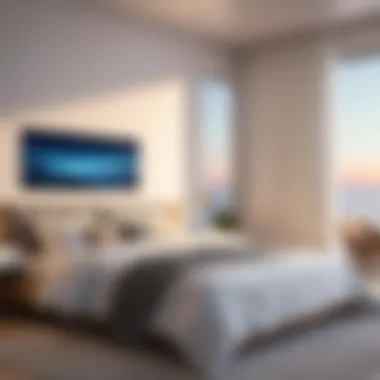
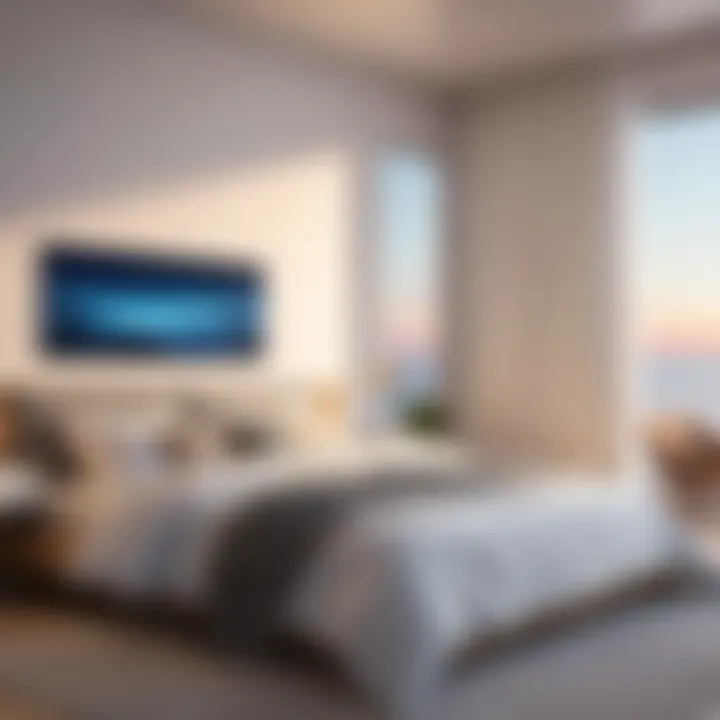
Intro
In an age where video content is ubiquitous, it is vital to understand its impact on sleep quality. Many people indulge in various forms of video entertainment before bedtime, yet few realize the potential consequences on their rest. This article explores the deep connection between video consumption and sleep, offering insights into how different types of video can either support or hinder sleep quality. As technology evolves and video becomes increasingly integrated into our lives, the implications for our nightly rest deserve thorough examination.
There is a noticeable difference in the effects on sleep quality depending on the content type and viewing habits. For instance, engaging with stimulating content may lead to increased anxiety or restlessness, while calming videos can aid relaxation. The following sections will delve into the psychological and physiological mechanisms at play. It will also provide readers with various strategies to enhance sleep quality, thus allowing for a more restful slumber.
Understanding the impact of video on sleep can empower viewers to make informed choices. The aim is to dissect the existing knowledge in this area, emphasizing the relevance to modern lifestyles. Here is a glimpse of the critical points we will explore:
- Types of video content: Identifying videos that help or hinder sleep.
- Psychological effects: Understanding how video can influence mood and stress levels.
- Physiological aspects: Examining how screen time affects biological rhythms.
- Alternatives for better sleep: Finding non-video options to improve rest.
As we navigate this digital landscape, informing ourselves about video consumption's implications serves not only individual interests but contributes to broader discussions about technology and well-being.
Technology Insights
The rapid advancement of technology means new viewing experiences are always emerging. In the context of sleep, it is important to ponder how these innovations may affect rest. For example, the prevalence of streaming platforms has altered viewing habits, leading to binge-watching scenarios that extend late into the night.
Latest Tech Trends
New technologies are constantly changing how videos are consumed. For instance, the rise of smart TVs and mobile devices allows easy access to video content anywhere. However, it's crucial to consider how these innovations can disrupt sleep. The blue light emitted by screens is known to interfere with melatonin production, making it harder to fall asleep.
Innovation in Tech
Consider advancements like blue light filtering technologies. Devices equipped with such features can mitigate some of the adverse effects associated with screen time at night. Some platforms even prioritize content that promotes relaxation. Understanding these innovations can help viewers make more suitable choices for their bedtime routines.
Entertainment Highlights
Given the significant role that various videos play, exploring their impact is indispensable.
Movie Reviews
While fast-paced action movies might keep viewers on edge, documentaries or nature films often evoke a calmer state of mind. Avoiding content that stimulates the fight-or-flight response may be beneficial for those struggling with sleep.
Music Releases
The type of music associated with video can also influence sleep. Soft, ambient sounds tend to facilitate relaxation, whereas heavy beats can elevate heart rates. Choosing the right soundtrack can make a substantial difference in the impact of video on rest.
Finale
As illustrated throughout this article, video consumption can significantly influence sleep quality. Understanding the effects of different content types allows individuals to craft a more restorative sleep routine. In a world that is increasingly reliant on video for entertainment, informing oneself and making thoughtful choices becomes essential. With the right approach, it is possible to harness the positive aspects of video while mitigating harms, ultimately promoting better health and well-being.
Prolusion
Understanding the relationship between video consumption and sleep quality is increasingly important in our technology-driven society. Sleep, an essential component of overall health and well-being, is adversely affected by various factors. Among these, video content is a significant variable worth examining. With the proliferation of screens in daily life, especially smartphones, laptops, and televisions, individuals often engage with video content just before bedtime. This trend raises questions about its impact on the quality of sleep obtained.
The psychological and physiological mechanisms involved play a critical role. Blue light emitted from screens has been studied extensively for its ability to disrupt melatonin production. Melatonin is a hormone essential for sleep regulation. Furthermore, the stimulating nature of certain video content can heighten alertness, making it harder for individuals to unwind. This article will explore those implications in depth, focusing on not only the detrimental effects but also identifying video types that could potentially enhance sleep quality.
By dissecting specific elements of video exposure before sleep, we aim to provide comprehensive insights into what a person can do to improve their nightly rest. Awareness and tailored video consumption habits can empower individuals to cultivate healthier pre-sleep routines. This article serves as a resource for those who wish to understand how video interacts with sleep, providing guidance to navigate this complex relationship in a digitally saturated world.
Context of Sleep in Modern Society
Sleep disturbances have become common in contemporary society. Lifestyle factors and media consumption have created new patterns that challenge the traditional sleep-wake cycle. Many individuals display unhealthy sleep habits, often due to excessive screen time and the influence of various forms of media. Research shows that several modern conveniences, including outdoor lighting and urban noise, contribute to sleep disruption. The effectiveness of sleep can also be affected by societal pressures, leading to an environment that is not conducive to rest.
The rise of binge-watching or the compulsive consumption of video content can lead to prolonged wakefulness. Lack of awareness about the importance of sleep often results in it being sacrificed for the allure of video entertainment. This context emphasizes the relevance of analyzing the specific effects of video on sleep quality, especially among groups known to consume video excessively, such as younger generations.
Purpose of the Article
The primary aim of this article is to elucidate the effects of video consumption on sleep. It seeks to explore the nuanced relationship between different types of video content and sleep quality. Content quality, format, and viewing habits will be examined in detail. Additionally, the article discusses the psychological and physiological ramifications of blue light exposure. Understanding these factors can help individuals make more informed choices about their media consumption before sleep.
Furthermore, this article will consider potential positive ways videos can enhance sleep, including relaxation applications and ambient content. It aims to not only highlight the negative associations between video and sleep but also provide healthy strategies for integrating video consumption into nightly routines. Ultimately, readers will gain insights that can aid in improving their sleep patterns amid the distractions of modern technology.
Understanding Sleep Mechanisms
Understanding sleep mechanisms is essential for this article as it provides the foundation for comprehending how video consumption influences sleep quality. Sleep is not merely a state of rest; it is a complex biological process that plays a critical role in mental and physical health. Knowledge of these mechanisms helps us grasp the potential impacts of media consumption on our nightly rest and overall well-being.
There are several benefits to understanding sleep mechanisms. First, it leads to more successful management of sleep-related issues. When people understand how their bodies naturally sleep and wake, they can adjust their habits accordingly, specifically regarding the use of technology before bed. Secondly, by recognizing the different sleep stages, individuals might better appreciate how certain activities, like watching videos, can interfere with or enhance these stages. Lastly, understanding circadian rhythms sheds light on why certain times of day are more conducive to sleep than others, thus informing individuals when to avoid screen time.
Stages of Sleep
Sleep consists of several stages, each serving distinct functions. The sleep cycle typically includes two major types: NREM (Non-Rapid Eye Movement) and REM (Rapid Eye Movement) sleep. Within NREM, there are three stages: N1, N2, and N3.
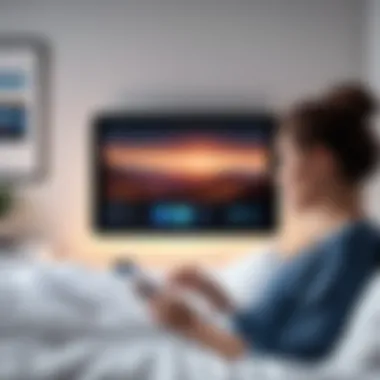
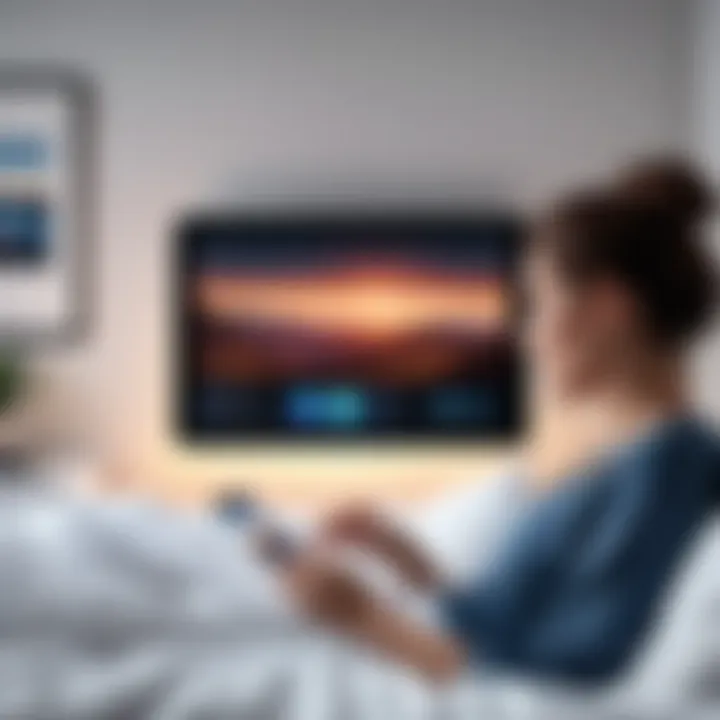
- N1 is the lightest stage of sleep, where a person drifts in and out of sleep and can be easily awakened.
- N2 constitutes about half of total sleep time and is characterized by a decrease in heart rate and body temperature.
- N3 is known as deep sleep, crucial for physical recovery, growth, and regeneration.
During REM sleep, which occurs about 90 minutes after falling asleep, the brain is active, and dreams occur. This stage is critical for cognitive functions such as memory consolidation and emotional regulation. The interplay of these stages highlights the need for uninterrupted sleep, which can be disrupted by excessive or inappropriate video consumption.
"Disruption in any of these stages can result in decreased sleep quality, affecting overall health and daily functioning."
Circadian Rhythms
Circadian rhythms refer to the physical, mental, and behavioral changes that follow a daily cycle. These rhythms respond primarily to light and darkness in a person’s environment. Understanding circadian rhythms is vital, as they govern our sleep–wake cycles and are deeply influenced by sleep patterns. The body’s internal clock promotes feelings of alertness during the day and triggers sleepiness at night, aligning with the natural light-dark cycle.
Melatonin, a hormone responsible for regulating sleep-wake cycles, plays a critical role here. Evening exposure to screens emitting blue light can inhibit melatonin production, altering circadian rhythms. This disruption can delay the onset of sleep or diminish overall sleep quality. Understanding these rhythms can guide individuals in managing their video consumption effectively, ensuring that it aligns with their natural biological clocks for better sleep outcomes.
Types of Video Content
Understanding the various types of video content is crucial in examining their effects on sleep quality. Different formats and purposes behind videos can significantly influence a person's psychological state and biological responses prior to sleep. In this section, we will explore two main categories: entertainment and informational videos, as well as how the length and format of these videos might contribute to or detract from sleep quality.
Entertainment versus Informational Videos
Entertainment videos serve the purpose of relaxation, enjoyment, and often escapism. Content like movies, TV shows, or gaming streams can lead to over-stimulation, making it harder to unwind. On the other hand, informational videos, such as documentaries or tutorials, entertain but also educate. While they might provoke thought, which can slightly heighten alertness, they often present valuable knowledge that can provide closure to thoughts that linger from the day.
One aspect to note is the emotional engagement that entertainment videos frequently produce. They can trigger emotions, causing a mental state that might be ill-suited for sleep. In contrast, informational content can either relax or keep the mind alert, depending on its complexity and delivery.
Moreover, the context in which viewer consumes this content matters. A chill evening might recommend comedy clips for light relief, whereas a desire to learn about a new skill just before bedtime could lead to watch an informative tutorial. Ultimately, individuals should be mindful of their reactions to different types of content and adjust their viewing habits as necessary.
Impact of Length and Format
The duration and format of videos significantly determine their impact on sleep quality. Short videos, typically found on platforms like TikTok or Instagram, might seem harmless. However, the rapid pace of these videos can lead to an increase in cognitive arousal, making it challenging for one to transition to a sleep state.
In contrast, longer videos, such as feature films or whole seasons of a series on streaming platforms, demand a longer engagement time. This can either extend one's screen time and delay bedtime, or lead to a more extended period of relaxation as viewers become more absorbed in a story. Here, individuals must consider not only how long they watch but also how their bodies and minds react.
The format, too, plays an essential role. Videos that are well-produced with soothing visuals and sound may ease the viewer into a restful mindset. Conversely, poorly edited or excessively stimulating videos might contribute to a restlessness that disrupts the transition to sleep. To summarize, it is essential to evaluate both the length and format of video content as part of a holistic strategy for improving sleep habits.
"The types of videos consumed before sleep hold a power that can either facilitate a good night's sleep or contribute to insomnia."
In closing, the diverse types of video content available in today's digital era require careful consideration in terms of their potential impact on sleep quality. Recognizing the distinctions between entertainment and informational formats, along with their respective lengths, can lead to informed choices that promote better rest.
The Role of Screen Time Before Sleep
Understanding the role of screen time before sleep is crucial in today's digital age. As more individuals incorporate screens into their nightly routines, it raises questions about their impact on sleep quality. With the omnipresence of smartphones, tablets, and laptops, it is no longer uncommon for people to engage with video content shortly before bedtime. This article section examines the psychological, physiological, and architectural effects associated with screen exposure before sleep.
Psychological Effects of Screen Exposure
The psychological dimension of screen exposure cannot be overlooked. Engaging with video content impacts how the brain prepares for rest. When screens are used prior to bedtime, cognitive arousal may increase. Exciting or stimulating videos can keep the mind active, making it difficult to transition into a restful state.
Moreover, the content consumed plays a critical role. For instance, distressing scenes or intense plots can lead to heightened anxiety levels, while tranquil videos, such as guided meditations, may promote relaxation. The mental engagement with fast-paced content may also cause prolonged wakefulness, disrupting pre-sleep routines.
Other psychological factors include the ability to create an environment conducive to sleep. If one is too engaged or emotionally involved in the videos being consumed, the likelihood of adhering to a healthy sleep schedule decreases. Individuals may find themselves inadvertently extending their screen time, leading to insufficient rest and increased grogginess the next day.
Physiological Responses to Blue Light
Physiologically, exposure to blue light emitted by screens has notable effects on sleep. Blue light interferes with the body's production of melatonin, the hormone responsible for regulating sleep. As the body is exposed to this light, particularly in the evening, the natural cues for sleep become blurred.
This disruption can contribute to longer time taken to fall asleep. Studies show that individuals who use screens before bed tend to report less sleep overall. In addition to length, the quality of sleep may suffer, with people experiencing more fragmented rest. A better understanding of these physiological responses can aid in making informed choices about screen time.
"Reducing screen time before bed can improve sleep quality and overall health."
Alterations in Sleep Architecture
The term sleep architecture refers to the structure of the various stages of sleep throughout the night. Screen usage before bed can significantly alter this architecture. Research reveals that individuals who consume video content may experience a decrease in REM sleep, which is vital for memory consolidation and emotional processing.
Further, excessive screen time can result in more shallow sleep, leading to poorer overall sleep quality. Shallow sleep limits restorative processes, creating a cycle where individuals may feel unrested during the day, perpetuating further reliance on screens for both entertainment and downtime.
In summary, recognizing the roles of psychological arousal, physiological changes due to blue light, and alterations in sleep architecture is pivotal. These elements provide a clearer picture of how video consumption before sleep impacts overall sleep quality. This knowledge can lead to healthier digital habits, ultimately improving sleep hygiene and enhancing daily life.
Potential Positive Effects of Video on Sleep
The relationship between video consumption and sleep is often focused on the negative implications, such as increased screen time leading to disruptions in the sleep cycle. However, it is essential to explore the potential positive effects that certain types of video content can have on sleep quality. This part of the article aims to illuminate how specific video genres can promote relaxation, making them potentially beneficial for those struggling with sleep issues. Guided meditations or relaxation videos can serve as effective tools in calming the mind, while ambient or nature videos can create a serene environment conducive to sleep.
Guided Meditations and Relaxation Videos
Guided meditation videos are designed to help individuals relax and focus on their breathing, which can significantly enhance the state of calm needed for sleep. These videos typically feature soothing music and a calming voice, leading viewers through various techniques that promote relaxation. Important elements of guided meditations include mindfulness practices that can reduce anxiety and stress, helping to lower heart rates and calm the mind before sleep. Additionally, many guided meditations focus on positive visualizations, encouraging the mind to engage in peaceful imagery rather than intrusive thoughts that might disrupt the transition to sleep.


Considerations for using guided meditations include selecting videos that align with personal preferences. For instance, some may prefer nature sounds combined with meditation, while others may choose purely verbal instructions. Platforms like YouTube have a multitude of options available, making it easier for users to find meditation styles that resonate with them.
Ambient or Nature Videos
Ambient or nature videos offer another avenue for enhancing sleep quality. These types of videos typically feature tranquil visuals, such as flowing rivers, rustling leaves, or calming ocean waves. The impact of these videos can be profound, as they create a visually soothing atmosphere that aids in winding down after a long day.
Watching nature videos can help reduce background noise that is currently distracting, promoting a more restful sleep environment. Furthermore, the slow, repetitive movements and soundscapes of nature can stimulate relaxation responses, minimizing stress from daily life. For tech-savvy individuals, utilizing smart TVs or streaming services allows access to a variety of high-definition nature videos that can enhance the visual experience, helping to placate an active mind.
In summary, both guided meditations and nature videos can have positive effects on sleep quality. By carefully choosing video content that fosters relaxation, viewers can leverage modern technology to improve their night rest. Considering the significant role that digital media plays in daily life, embracing its positive aspects may lead to better sleep outcomes.
Video Consumption Habits
Understanding the habits surrounding video consumption is crucial in evaluating its impact on sleep quality. In a world increasingly dominated by screens, the way viewers interact with video content before bedtime can have significant consequences on their rest. The dynamics of how, when, and what types of videos are consumed comprise a tapestry that weaves together the effects of media and sleep.
For many, video serves as a primary source of entertainment and relaxation. However, the energy spent engaging with digital content can often push into late hours, unintentionally robbing individuals of valuable sleep time. The prevalent trend of binge-watching, often fueled by platforms like Netflix, leads to prolonged exposure to screens at night, thus altering natural sleep cycles. This highlights a central paradox: while people may seek comfort in video, the very act of consumption may be impeding their ability to achieve restorative sleep.
Key Considerations:
- The timing of video consumption plays a crucial role. Watching videos right before sleep can lead to increased alertness, making it difficult to wind down.
- Content type matters significantly. Fast-paced entertainment videos may heighten anxiety levels, while soothing, slow-paced content can assist in relaxing the mind.
As video consumption continues to evolve, awareness of its impact on individual sleep habits becomes more critical. Recognizing these patterns opens the door to better management of viewing habits, allowing for an improvement in overall sleep quality.
Patterns of Use Among Different Demographics
Video consumption patterns vary widely between different demographics, influenced by age, lifestyle, and personal preferences. Research indicates that younger generations, particularly millennials and Gen Z, are more inclined to engage with video content across a diverse array of devices, particularly smartphones. This demographic often prioritizes short-form videos on platforms such as TikTok and Instagram, facilitating a fast-paced viewing experience.
In contrast, older generations tend to gravitate towards traditional forms of video like television shows and movies. Their viewing habits are often more structured, following set schedules, which can buffer against late-night binge-watching. However, the line is increasingly blurring as streaming services grow in popularity among all age groups. Regardless of age, it is imperative to understand that different viewing habits correlate with varying effects on sleep quality.
Key Findings:
- Young adults may experience sleep disruption due to high engagement in social media video consumption.
- Older adults might benefit from organized viewing schedules but must also be cautious of late-night programming.
Identifying Risk Factors for Sleep Disruption
Identifying risk factors associated with video consumption is pivotal for anyone seeking to improve their sleep quality. Certain behaviors can significantly elevate the likelihood of sleep-related issues, making it vital to understand and mitigate these risks.
Common risk factors include:
- Excessive Viewing Time: Spending long hours watching videos can reduce the overall sleep duration, leading to chronic sleep deprivation.
- Screen Time Close to Bedtime: Engaging with screens within an hour of sleeping can trigger insomnia by increasing alertness.
- Content Overload: Exposure to intense or emotionally charged videos can stimulate the brain, making it challenging to relax.
"Awareness of these risk factors creates an opportunity for individuals to modify their viewing habits and prioritize healthy sleep practices."
Making conscious decisions about video consumption can help mitigate these risks. For example, individuals can set limits on viewing time, choose calming video content, or implement technology that manages screen exposure. Recognizing these risk factors is the first step toward a better night’s rest.
Strategies for Enhancing Sleep with Video
The relationship between video consumption and sleep quality is intricate and requires careful consideration. Engaging with video content before bedtime may not be inherently negative; rather, it depends on how it’s approached. Strategies for Enhancing Sleep with Video focus on optimizing video use to foster a conducive sleep environment. These strategies can serve as tools to counteract the adverse effects of screen time, helping tech-savvy individuals leverage their gadgets while preserving sleep efficiency.
Key considerations when developing strategies for video use include the type of content consumed, the timing of consumption, and the technology employed. By curating specific types of video content and applying technological adjustments, individuals can create a more helpful nighttime routine, which can lead to improved overall sleep quality.
Curating a Nighttime Video Playlist
Creating a thoughtful playlist for nighttime viewing can be an effective way to improve sleep quality. The idea is to choose content that promotes relaxation instead of stimulation. For instance, consider incorporating guided meditations, calming nature videos, or low-key documentaries. Such content can help to ease the mind, prepping it for sleep.
When curating this playlist, be mindful of the following:
- Duration: Shorter videos often work better, reducing the chance of falling into a binge-watching trap that could disrupt sleep schedules.
- Content Type: Seek out videos that are calming in tone and have a slow pace. Content that actively engages your mind may hinder relaxation, so choose something soothing.
- Visual and Auditory Elements: Opt for visually soft images and sounds that heighten the feeling of tranquility. Avoid sharp contrasts and abrupt sound changes as they may be disruptive.
This strategy supports healthy sleep hygiene and strengthens the connection between video use and improved sleep quality.
Implementing Technology to Reduce Disruption
Advancing technologies provide various tools to reduce the disruptive impact of video on sleep. Making simple adjustments can significantly improve sleep onset and overall quality. Here are some effective approaches to consider:
- Blue Light Filters: Using built-in blue light settings on devices, or external filters, can reduce the amount of blue light emitted while watching video. Blue light has been linked to sleep disruption, making these adjustments essential for nighttime viewing.
- Screen Brightness: Lowering the brightness of screens can minimize eye strain and help foster a more relaxed environment. This small change can support the body's natural preparation for sleep.
- Timer Functions: Set timers on video applications to limit viewing time. This feature ensures videos stop automatically, helping to prevent prolonged exposure that can delay sleep.
- Focus Modes: Many devices now offer focus or nighttime modes. These settings can restrict notifications and reduce distractions, allowing for a more immersive and calming experience without interruptions.
By integrating these technologies, video consumption can be optimized for sleep enhancement rather than disruption.
"Balance is key; using technology wisely can lead to restorative sleep rather than sleep deprivation."

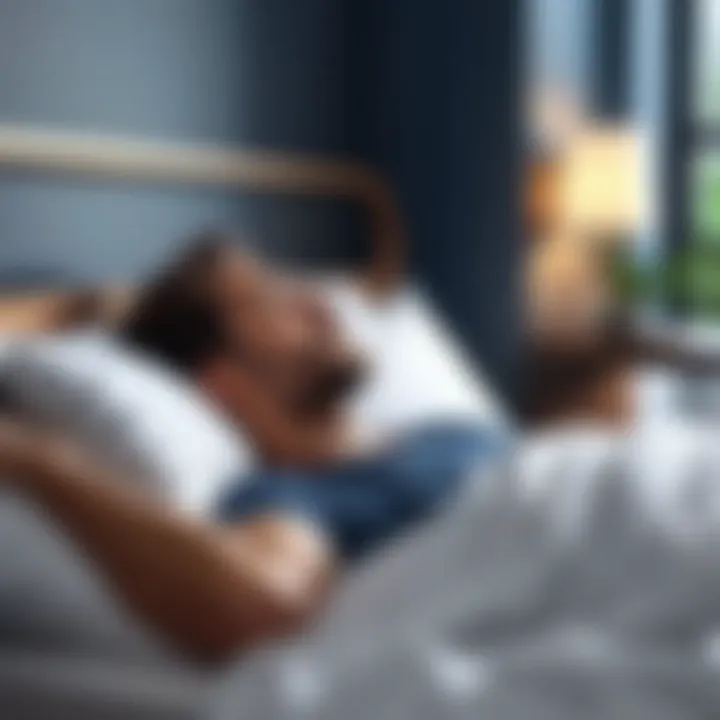
In summary, employing targeted strategies that focus on the content, timing, and technology used in video consumption can lead to better sleep outcomes. It empowers viewers to enjoy their media without sacrificing rest.
Alternatives to Video for Better Sleep
In a world dominated by screens and video content, the quest for restful sleep has become increasingly complicated. As highlighted throughout this article, excessive screen time can lead to negative impacts on sleep quality. Therefore, exploring alternatives to video is crucial for those who struggle with sleep issues. These alternatives offer a means to unwind without the adverse effects associated with screen use. Emphasizing low-stimulation activities can facilitate a smoother transition to sleep, helping to enhance overall sleep quality.
Audiobooks and Podcasts
Audiobooks and podcasts represent a compelling alternative to video consumption. They provide engaging content without the need for visual stimulation. Listening to a soothing narrative can make the mind less active and promote relaxation. Many people find that the calming tones of a narrator or host can reduce stress levels. This distraction from daily worries can aid in preparing the body for sleep.
The act of listening allows for a more passive form of engagement, thus avoiding the blue light exposure caused by screens. Several studies suggest that auditory stimulation can positively influence sleep onset by limiting disruptive thoughts and anxiety. Genres such as soothing fiction, guided relaxation, or ambient sounds have proven particularly helpful.
Benefits of Audiobooks and Podcasts:
- Ease of access: Many platforms provide vast libraries.
- Diverse topics: Users can explore various genres, catering to different preferences.
- Reduced visual strain: Listening requires less from one's eyes, promoting a calming environment.
"Engaging with audiobooks can not only entertain but also serve as a relaxing bedtime ritual, allowing individuals to drift into sleep more naturally."
Reading and Other Low-Stimulation Activities
Reading remains another exceptional alternative to video for those looking to improve their sleep quality. Unlike video content, reading a book or a magazine generally requires minimal mental arousal. The focus shifts to the text, which often fosters a serene atmosphere. Opting for physical books rather than e-readers may further mitigate exposure to blue light, allowing for a more conducive environment for sleep.
Low-stimulation activities like journaling or gentle stretches can also be effective. Engaging in these practices can create a bedtime routine that signals to the body it is time to wind down. Establishing such habits can lead to better overall sleep hygiene.
Key Considerations for Reading Before Sleep:
- Choose calming material: Consider fiction or light non-fiction to avoid overstimulation.
- Set a comfortable environment: A cozy, well-lit space encourages focus over distraction.
- Limit time spent reading: Prolonged exposure can lead to cognitive overstimulation, interfering with sleep onset.
By prioritizing these alternatives, individuals can significantly transform their nighttime routines, allowing for relaxation that promotes better sleep quality.
Research and Studies
Research in the field of video consumption and its effects on sleep quality is crucial to understand the broader implications of modern media habits. This section focuses on specific elements that illustrate the complex interplay between video usage and sleep. By delving into current studies and methodologies, one can appreciate how variables such as type of video content, duration of exposure, and time of viewing contribute to sleep-related outcomes.
The benefits of examining this topic include the ability to provide data-driven recommendations for optimizing sleep quality. Researchers can identify harmful practices prevalent among tech-savvy individuals who often engage with screens before bedtime. With increased insight, we can tailor interventions that specifically address various demographics.
Considerations in this area often involve the variability in individual responses to video content and the mental and physical health determinants that influence them. This research can lead to effective strategies aimed at mitigating negative effects from video use. Understanding these elements is essential for parents, educators, and professionals concerned about sleep health today.
Evidence Linking Video Use with Sleep Quality
Numerous studies have documented the relationship between video consumption and sleep quality. Evidence shows that prolonged exposure to screens, especially before bedtime, correlates with increased difficulty in falling asleep and decreased sleep duration. One significant factor contributing to these observations is the blue light emitted from screens, which can disrupt melatonin production, a hormone pivotal for sleep regulation.
A comprehensive analysis of these studies indicates that:
- Screen time is associated with higher sleep latency.
- Individuals consuming harried or stimulating content report higher rates of insomnia.
- Viewing habits have shown a consistent trend towards poor sleep patterns over time.
- Those engaged in binge-watching episodes often neglect recommended sleep hygiene practices, exacerbating sleep issues.
Such findings emphasize the importance of understanding one's video habits. Based on current research, it is clear that modifying viewing habits can lead to significant improvements in sleep quality.
Case Studies and Participant Observations
Case studies and observational research bolster the findings in sleep research. For instance, participants who recorded their video consumption behavior in conjunction with sleep quality metrics have provided valuable insights. One such study revealed that individuals who watched calming videos before bed experienced better sleep quality, notably longer sleep durations and fewer awakenings.
Direct observations from participants highlight varying degrees of impact based on:
- Content type: Relaxing videos versus those eliciting emotional engagement.
- Viewing time: Usage before bed compared to earlier in the day.
- Demographic factors: Age and existing sleep disorders can also influence the relationship.
These variables suggest the need for personalized approaches to media consumption. As we gather more data from different demographics, recommendations and advice can become more targeted and effective in supporting better sleep.
"Understanding the links between video consumption and sleep quality is vital, especially as technology continues to evolve and shape our daily routines."
Culmination
The topic of video consumption and its influence on sleep quality holds significant relevance in today’s digitally driven society. Understanding this impact is important for individuals who wish to maintain or enhance their sleep health amid constant media exposure. This article has provided insights into various dimensions of video use and its potential implications on sleep.
Summarizing Key Findings
Several key findings emerged from our exploration. First, the type of video content significantly affects sleep quality. For example, relaxation videos or guided meditations can promote better sleep hygiene, while stimulating entertainment may have adverse effects. Furthermore, the physiological responses to blue light exposure from screens are crucial, as they can interfere with the body's natural sleep cycles. The article also detailed individual consumption patterns, highlighting that younger demographics are more prone to sleep disruptions caused by late-night screen time.
Another significant aspect discussed is the role of video in altering sleep architecture. This concerns how various stimuli from videos can affect the depth and continuity of sleep. It is evident that some video content can either assist or hinder one’s ability to fall asleep and stay asleep throughout the night.
"The interrelationship between technology and sleep quality highlights the necessity of adopting mindful video consumption habits to foster better rest patterns."
Implications for Future Research and Practice
The implications for future research are clear. More studies are needed to quantify the effects of different types of video content on sleep across diverse populations. This includes longitudinal studies that assess long-term video habits and their relationship with sleep outcomes. Additionally, further investigation is warranted into specific genres of video content that may be particularly beneficial for relaxation.
For practical applications, recommendations for video consumption before sleep should be emphasized. Health professionals can guide patients by suggesting specific types of content to integrate into a soothing bedtime routine. On a broader scale, technology companies can innovate new features aimed at reducing blue light emissions and offering curated video playlists that promote sleepiness, thereby prioritizing users' health.







